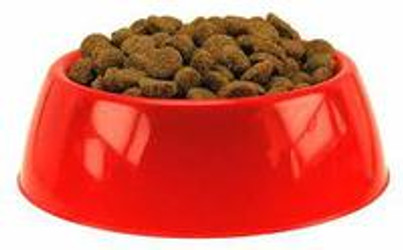Dispelling the Mystery in Reading Dog Food Ingredient Labels
Posted by Amy - Woodin' You Pampered Paws on Aug 3rd 2016
Dispelling the Mystery in Reading Dog Food Ingredient Labels
We want to help take the mystery out of reading dog food labels once and for all! The first thing you should know is that all ingredients listed are measured by weight; the heaviest ingredients down to the lightest. This is the same on all labels from raw, freeze dried, kibble and cans. The next important detail to keep in mind while reading labels is that many of the pet food companies use creative marketing to appeal more to our human pallet rather than our dogs. And let's face it, that is good marketing, because it leads to lots of sales. This is not necessarily a bad thing, but it can be a bit misleading if you're not sure what it all means.
Since dogs are carnivores, it only makes sense that we should be mindful to ensure their daily diet is supported by protein sources coming from meat based proteins rather than proteins from carbohydrates. This is where the label reading can get a little bit tricky, but hang tight you'll soon be able to determine the difference. When reading labels, it would be ideal to have the first ingredient be a meat protein. Sometimes you might see something like 'De-Boned Turkey' listed first and that sure does look appealing, but now let's make sense of this. A hunk of turkey has a lot of water weight. At least in this case we read that bone weight is not being counted since it's de-boned. After all of the water weight is eliminated, how much turkey is really left? Hmm...I think it's safe to say not as much as we originally thought.
So that being said, now I would want to see more meat based proteins to follow and preferably a meat meal. Whoa! Meal? Isn't that a bad word in the pet food ingredient panel? Answer, NO! It's not a dirty little word. Meal is when they take the ingredient and convert it into a heavy dense substance very similar to flour. So for instance, chicken meal is a GREAT protein, so is lamb meal, salmon meal, duck meal, etc. This meal ingredient means there is a lot of heavy dense meat protein. The word that most people get hung up on and even freak out a little bit is chicken by-product and we often see this associated with the word meal( ie chicken by-product meal). Now I agree, head for the hills if you see this in an ingredient list. By-product has too many variables to really know for certain what the heck it is. It's not regulated enough. It often contains bone and possibly whatever else they scrape up from the slaughter house floor. Ewe! Sorry to be so graphic, but it's true.
Now, onto some of the other commonly used ingredients such as veggies like sweet potatoes, peas, lentils and so on. When you see these words just as they are you can assume or I should say determine that these ingredients were measured by weight in their natural state. If you see potatoes listed know that these contain LOTS of water weight compared to the ingredient 'potato flour'. It's easy comparing the two knowing that 'potato flour' yields a much higher volume of actual potato than 'potatoes' alone.
When I am reading through certain brands I am amazed to see the limited amount of meat protein as leading ingredients. Often instead, I see a high water packed protein followed by mega veggie and legume proteins and then eventually, but not always, some more meat based proteins much further down the ingredient list. And worst yet, consumers are paying high dollar for some of these foods. Arg! Clever marketing, again appealing to our pallet and hoping we aren't educated enough to read between the lines. Have you ever noticed that most lower end foods are full of fun colors? Reds, greens and yellows. Have you ever wondered how they achieve this? I bet if you look close enough at the ingredients, you'll see lots of dyes. How safe is that for our pets long term? We might have dyes in some of our candies and certain foods, but I bet not in our daily diets, so why would this be a healthy choice for our pets daily diets? Most healthier pet foods are pretty boring in color and that is directly because the ingredients used are bland to our eyes and that is not a bad thing.
Now you have some great information to be able to read through pet food ingredient labels and make a sound reasonable assessment to see if the ingredients listed live up to your expectations.

